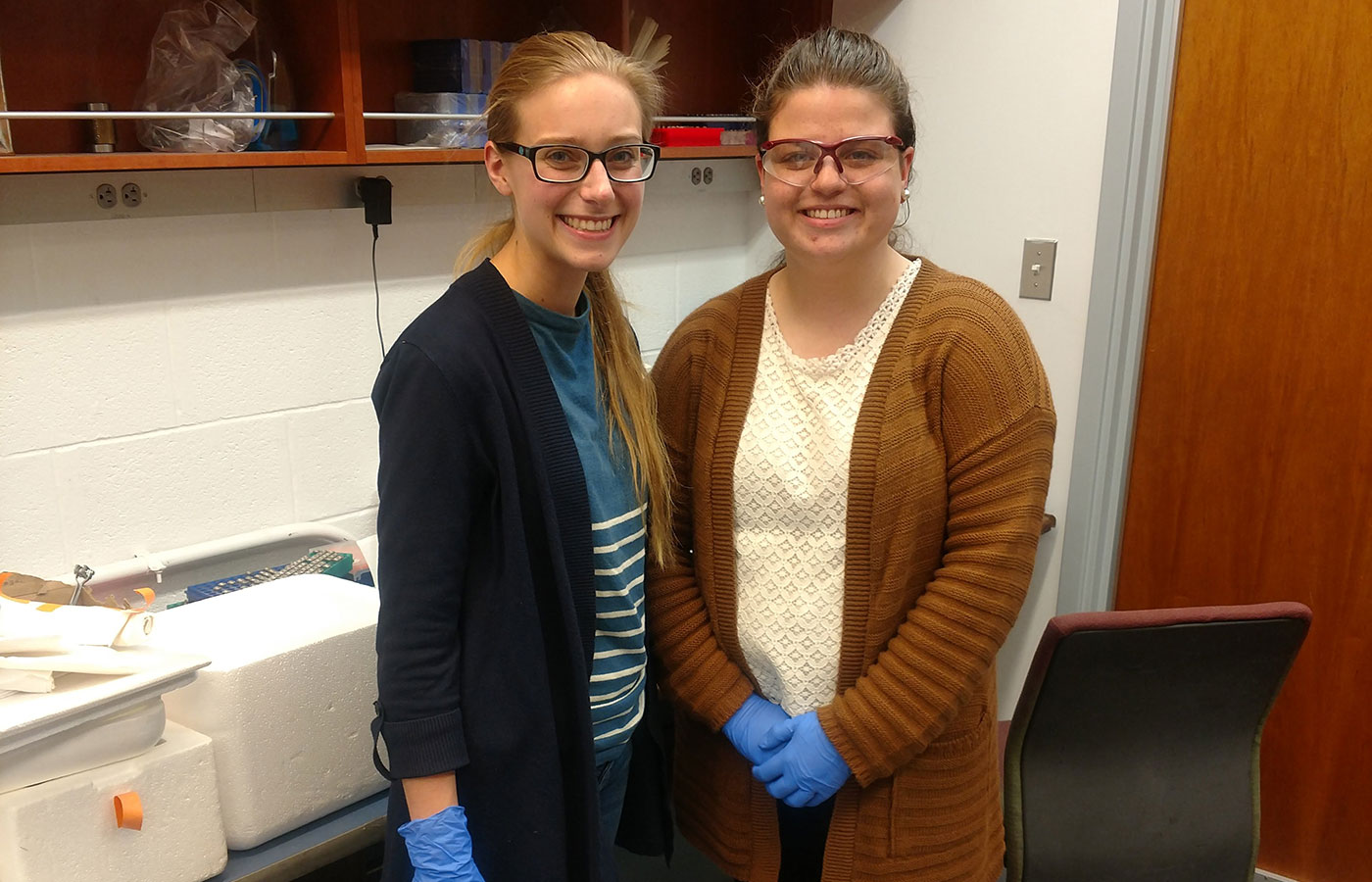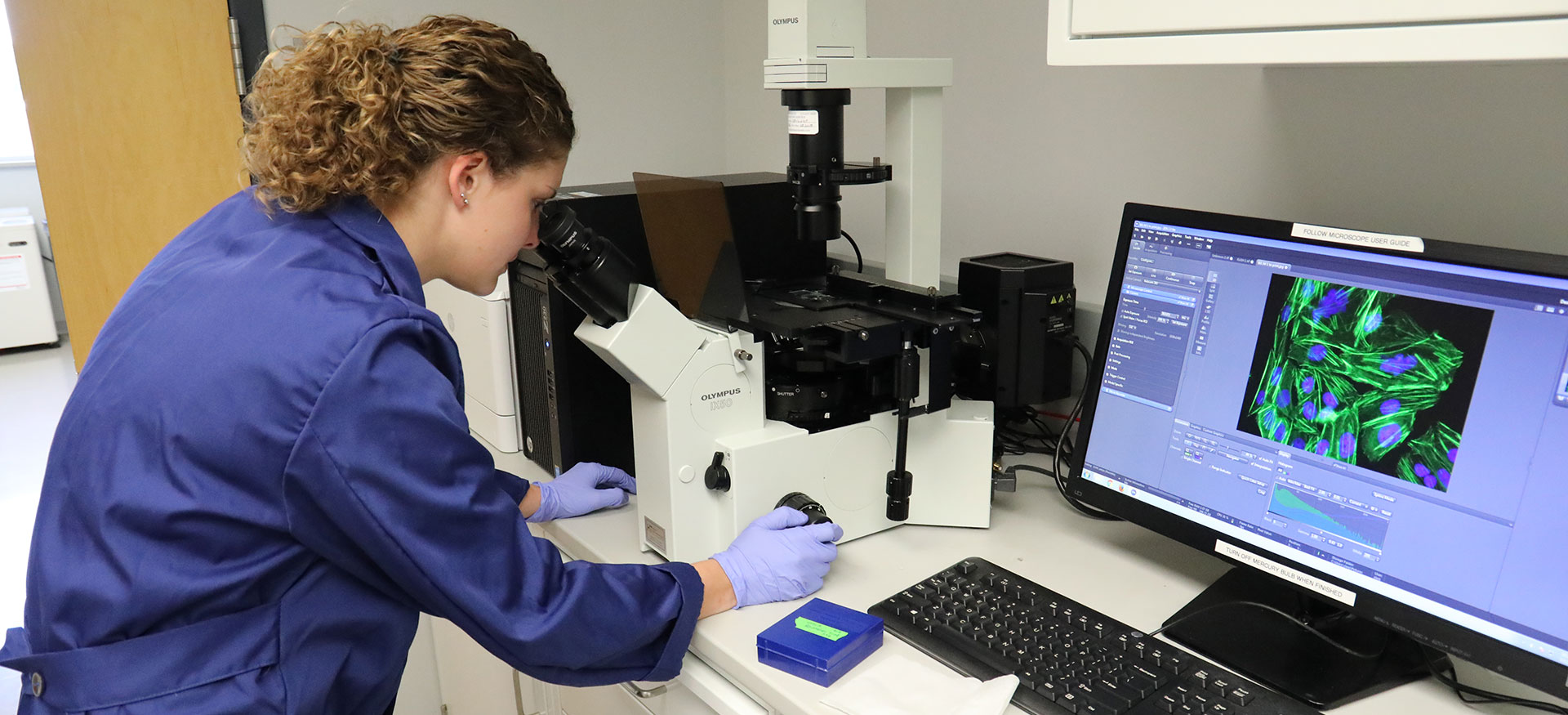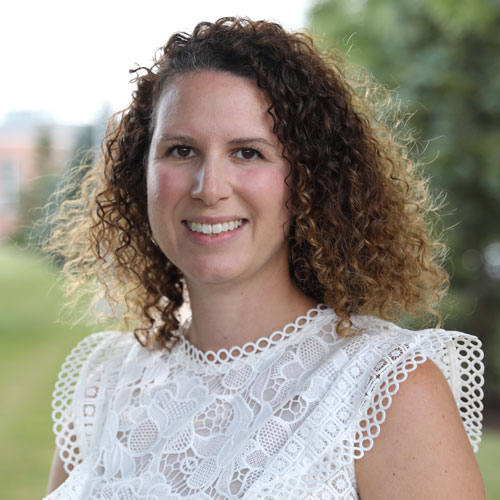Department of Biology
Unrivaled access to outstanding lab facilities and a warm, close-knit community of students and faculty are hallmarks of our biology and neuroscience programs.
Programs in biology offer a uniquely DeSales experience. Our small class sizes, modern laboratories, and supportive community create an atmosphere for learning enriched by our Salesian values. Your faculty, advisors and research mentors know you and
are dedicated to your success.
Our faculty represent a broad range of individual specialties, including Molecular and Cell Biology, Genetics, Development, Neuroscience, Evolution, Ecology, and Behavior. They are well-respected for their research and professional activities. As a student, you'll have the opportunity to partner with faculty in research, publish and present your work, and participate in a dynamic community of scientific inquiry.
Faculty, Student Research Paper Published in Science Journal & International Database

Two faculty members and two alumni recently had their research on proteins published in a leading journal. But that’s not all.
Dr. Julie Himmelberger, Dr. Austen Barnett, Brianna Gillott ’18, and Kayla Alderfer ’18 co-authored a research paper, along with Dr. David Christianson of the University of Pennsylvania, that’s been published in the Journal Acta Crystallographica D.
The group solved a protein structure that had never been solved before. In addition to being published in the journal, their work will permanently be stored in the Protein Data Bank, an international online database that stores any crystal structures of proteins that have been solved. It’s the first time any of Himmelberger’s students have been featured in the data bank.
“It’s a pretty big deal for us,” says Himmelberger, associate professor of biochemistry and head of the Division of Sciences and Mathematics. “We pick things that are interesting and haven’t been studied and try and learn from them.”
Both Gillott and Alderfer say they’re incredibly proud and grateful to have had the opportunity to work on the project, which has helped them both in their careers.
“I am honored to have something in publication that shows the hard work and dedication we all put into this project,” says Gillott, who currently works as a quality specialist at Merck’s West Point site. “My positive undergrad research experience has helped me advance in my career. It’s something I am always able to discuss in interviews as well as with my co-workers.”
Alderfer is about to begin her third year of medical school at Temple/St. Luke's School of Medicine and is considering residencies in internal medicine or pediatrics.
“The publications are just glimpses of the work that was put into them. My time at DeSales has helped prepare me not only for the basic science lab work but has also equipped me with the tools to engage in the greater scientific community and scientific writing.”
Himmelberger and her students collaborated with Dr. Austen Barnett, assistant professor of biology, who was responsible for the phylogenetic analysis and parallel ancestral state reconstruction, which broke down which features of the protein could be explained by evolution.
The group traveled to Christianson’s lab at the University of Pennsylvania in December 2017 to prepare the protein crystals that they grew for analysis at a Synchrotron. The crystals were frozen in liquid nitrogen at UPenn and then shipped to the Stanford Synchrotron Radiation Lightsource, where the X-ray diffraction data was collected and then analyzed by Dr. Patrick Blank at UPenn.
Faculty, Student Research Paper Published in Science Journal & International Database

Two faculty members and two alumni recently had their research on proteins published in a leading journal. But that’s not all.
Dr. Julie Himmelberger, Dr. Austen Barnett, Brianna Gillott ’18, and Kayla Alderfer ’18 co-authored a research paper, along with Dr. David Christianson of the University of Pennsylvania, that’s been published in the Journal Acta Crystallographica D.
The group solved a protein structure that had never been solved before. In addition to being published in the journal, their work will permanently be stored in the Protein Data Bank, an international online database that stores any crystal structures of proteins that have been solved. It’s the first time any of Himmelberger’s students have been featured in the data bank.
“It’s a pretty big deal for us,” says Himmelberger, associate professor of biochemistry and head of the Division of Sciences and Mathematics. “We pick things that are interesting and haven’t been studied and try and learn from them.”
Both Gillott and Alderfer say they’re incredibly proud and grateful to have had the opportunity to work on the project, which has helped them both in their careers.
“I am honored to have something in publication that shows the hard work and dedication we all put into this project,” says Gillott, who currently works as a quality specialist at Merck’s West Point site. “My positive undergrad research experience has helped me advance in my career. It’s something I am always able to discuss in interviews as well as with my co-workers.”
Alderfer is about to begin her third year of medical school at Temple/St. Luke's School of Medicine and is considering residencies in internal medicine or pediatrics.
“The publications are just glimpses of the work that was put into them. My time at DeSales has helped prepare me not only for the basic science lab work but has also equipped me with the tools to engage in the greater scientific community and scientific writing.”
Himmelberger and her students collaborated with Dr. Austen Barnett, assistant professor of biology, who was responsible for the phylogenetic analysis and parallel ancestral state reconstruction, which broke down which features of the protein could be explained by evolution.
The group traveled to Christianson’s lab at the University of Pennsylvania in December 2017 to prepare the protein crystals that they grew for analysis at a Synchrotron. The crystals were frozen in liquid nitrogen at UPenn and then shipped to the Stanford Synchrotron Radiation Lightsource, where the X-ray diffraction data was collected and then analyzed by Dr. Patrick Blank at UPenn.







